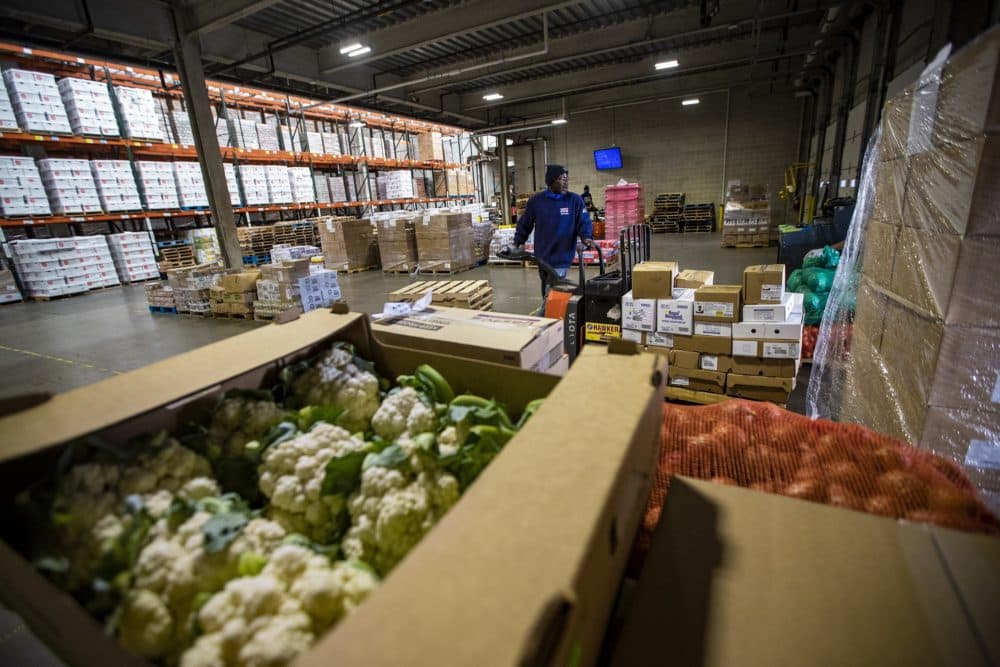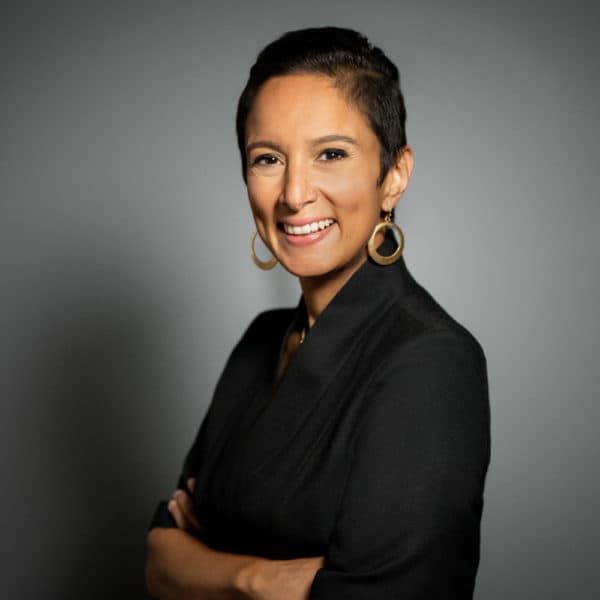Advertisement
How the Greater Boston Food Bank is handling increased pressure amid rising inflation
Resume
Prices at gas pumps and grocery stores have increased a lot. Consumer prices in February were 7.9% higher than a year ago, according to a recent report from the U.S. Labor Department. That means annual inflation has risen to a 40-year high.
The skyrocketing prices are putting increasing pressure on organizations that vulnerable people rely on for help, like food banks.
WBUR's Morning Edition host Rupa Shenoy checked in with Catherine D'Amato, CEO of the Greater Boston Food Bank, on how the organization is coping.
Highlights from this interview have been lightly edited for clarity.
Interview Highlights
On the need the Greater Boston Food Bank is seeing now:
"We are serving about 600,000 people a month through a network of 600 nonprofit partners in 190 cities and towns. This number dramatically increased from pre-COVID, through COVID, and it is not retreating. So, the bad news is we're still seeing food insecurity at very high levels. We're seeing a substantial amount of folks who have never been to a food pantry before, and this rising cost of food is driving more people to use their local food pantry."
These issues are having "a higher, disproportionate impact on [communities of color.] And mostly, that's because of the service into those communities or the resources to get them from point A to point B are less."
On what's hurting food banks the most:
"We import almost 87% of our food in Massachusetts, and this has very much to do with our location and the seasonality. So, we're deeply reliant on food coming into our state, which makes it more expensive in general. Then, if you add nearly 8% inflation on that in the last 12 months, you begin to see how it mounts up significantly for families.
"In fiscal year '22, we've seen an overall increase of 11% in average food pricing. Subcategories that are up considerably include potatoes, canned frozen vegetables, eggs, chicken, bananas and apples. Then you have now the cost of gasoline. All of our trucks operate on diesel, as do most of the vehicles that are moving food. We started our year at $3.50 a gallon and it's now pushing well over $6 a gallon and will likely go up."
On how visibility of food insecurity plays into these challenges:
"During COVID, what brought food insecurity to a heightened awareness to the public were those long lines of cars waiting for hours and hours and hours to open their trunks and volunteers putting food in — that still exists, that is still happening. People are still struggling. People are still out of work. Food insecurity is such an integral part of all the intersectionalities related to poverty: race, economic equality, education, housing — food is a piece of that.
"We have enough food in this country. We have food resources. We need to be able to make sure that that distribution is there, and that we're getting the food into the communities, especially those disproportionately hurt by COVID and prior."
This segment aired on March 17, 2022.

